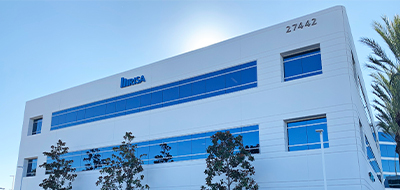Why Engineers Choose RISA for Steel Structures
- Modeling Ease
- Robust Analysis
- Steel Connection Design
- Seamless Integration
- Effortless BIM Support
-
Modeling Ease

Our cohesive user interfaces were created to be as easy to use as possible. Whether you’re creating geometry graphically in multiple views using advanced modeling tools, creating multi-story buildings floor by floor or using spreadsheets to input data directly, RISA has you covered.
-
Robust Analysis

A unique blend of ability and simplicity, RISA utilizes finite element analysis to solve complex steel models in no time. With analysis options such as static, dynamic, response spectra, live load reduction, vibration and time history, RISA has the solution for you.
-
Steel Connection Design

Design a wide range of steel connections including various shear, moment, brace and base plate connections with ease using full 3D visualization, shop-drawing style views, and expandable engineering calculations for all code-based limit states.
-
Seamless Integration
Leverage data seamlessly between products within the RISA suite. Track loads from building models for lateral design. Assign connections and use member end forces for design of steel connections. Utilize column/wall base reactions for foundation design. Avoid mistakes and maximize project coordination.
-
Effortless BIM Support

Collaboration is an essential element of the design process. RISA allows engineers to work collectively with architects, detailers and fabricators through direct links with Autodesk Revit, SDS2, Tekla Structures and Archicad.
RISA Projects
Top Reasons to Choose RISA
Expert Support
Access our responsive, US-based support team for expert guidance and solutions when you need them.
Comprehensive Training
Learn at your own pace with on-demand courses or join live sessions led by experienced engineers.
Flexible Licensing
Enjoy flexible, concurrent based subscription licensing that ensures users have access to software when they need it. Scale your license count based on usage without the fear of overage charges.







